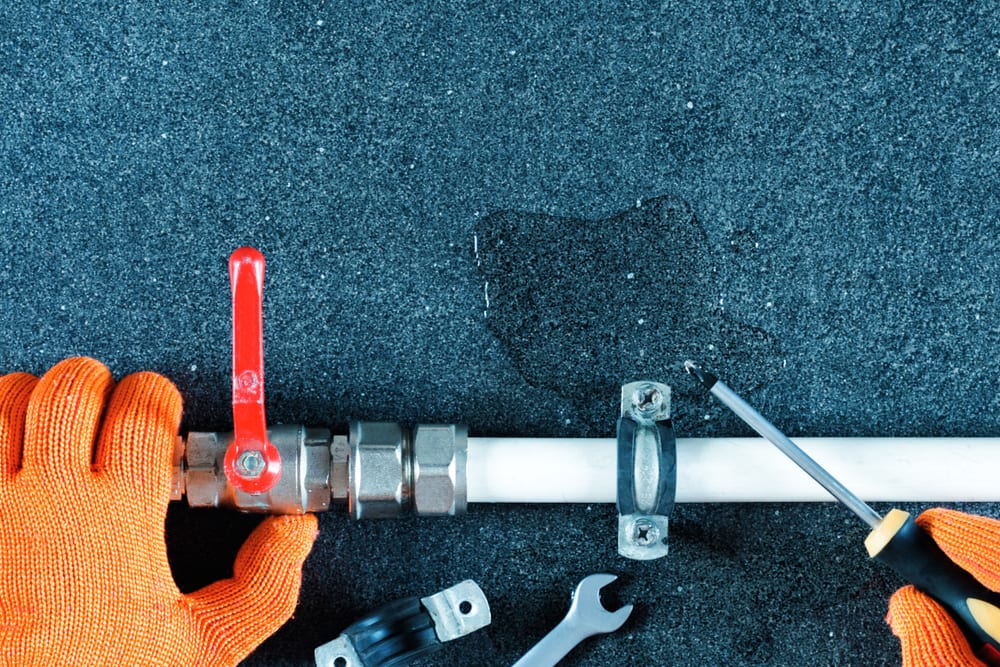Everybody has got their own unique opinion involving Locating water leaks.

Early discovery of leaking water lines can mitigate a possible catastrophe. Some small water leaks might not be visible.
1. Examine the Water Meter
Every residence has a water meter. Inspecting it is a surefire way that helps you uncover leakages. For starters, switch off all the water sources. Ensure no person will certainly flush, make use of the faucet, shower, run the cleaning maker or dishwasher. From there, most likely to the meter and watch if it will certainly change. Since no person is using it, there need to be no motions. If it moves, that suggests a fast-moving leak. If you find no changes, wait a hr or two as well as check back once again. This means you may have a slow-moving leakage that might also be underground.
2. Check Water Usage
Analyze your water bills as well as track your water intake. As the one paying it, you should observe if there are any kind of inconsistencies. If you identify sudden changes, despite your consumption being the same, it implies that you have leakages in your plumbing system. Bear in mind, your water bill must drop under the very same range each month. An abrupt spike in your bill indicates a fast-moving leak.
On the other hand, a consistent increase on a monthly basis, despite the exact same behaviors, shows you have a slow leak that's additionally gradually rising. Call a plumber to completely inspect your building, especially if you really feel a warm area on your flooring with piping below.
3. Do a Food Coloring Examination
When it comes to water intake, 30% comes from bathrooms. If the color in some way infiltrates your dish during that time without flushing, there's a leak in between the storage tank and also dish.
4. Asses Exterior Lines
Do not fail to remember to check your outside water lines also. Ought to water permeate out of the connection, you have a loosened rubber gasket. One tiny leakage can waste heaps of water and surge your water bill.
5. Check as well as Analyze the Circumstance
House owners should make it a practice to examine under the sink counters and even inside closets for any bad odor or mold development. These two warnings indicate a leak so timely focus is required. Doing routine assessments, also bi-annually, can save you from a major issue.
If you understand your house is currently old, maintain a careful eye on your heaters, hose pipes, pipes etc. Check for stainings and deteriorating as a lot of appliances and pipes have a life expectancy. They will likewise naturally weaken because of deterioration. If you think leaking water lines in your plumbing system, don't wait for it to escalate. Call a professional plumber right away so you don't wind up with a terrible mess in your house.
Early detection of dripping water lines can alleviate a prospective catastrophe. Some tiny water leakages might not be noticeable. Checking it is a surefire means that aids you uncover leaks. One little leakage can squander loads of water and increase your water expense.
If you think leaking water lines in your plumbing system, do not wait for it to intensify.
WARNING SIGNS OF WATER LEAKAGE BEHIND THE WALL
PERSISTENT MUSTY ODORS
As water slowly drips from a leaky pipe inside the wall, flooring and sheetrock stay damp and develop an odor similar to wet cardboard. It generates a musty smell that can help you find hidden leaks.
MOLD IN UNUSUAL AREAS
Mold usually grows in wet areas like kitchens, baths and laundry rooms. If you spot the stuff on walls or baseboards in other rooms of the house, it’s a good indicator of undetected water leaks.
STAINS THAT GROW
When mold thrives around a leaky pipe, it sometimes takes hold on the inside surface of the affected wall. A growing stain on otherwise clean sheetrock is often your sign of a hidden plumbing problem.
PEELING OR BUBBLING WALLPAPER / PAINT
This clue is easy to miss in rooms that don’t get much use. When you see wallpaper separating along seams or paint bubbling or flaking off the wall, blame sheetrock that stays wet because of an undetected leak.
BUCKLED CEILINGS AND STAINED FLOORS
If ceilings or floors in bathrooms, kitchens or laundry areas develop structural problems, don’t rule out constant damp inside the walls. Wet sheetrock can affect adjacent framing, flooring and ceilings.
https://www.servicemasterbyzaba.com/blog/how-to-detect-water-leakage-in-walls/

As a fervent reader on Detecting hidden plumbing leaks, I figured sharing that segment was smart. Be sure to take the opportunity to distribute this content if you enjoyed it. We truly appreciate reading our article about Detecting hidden plumbing leaks.